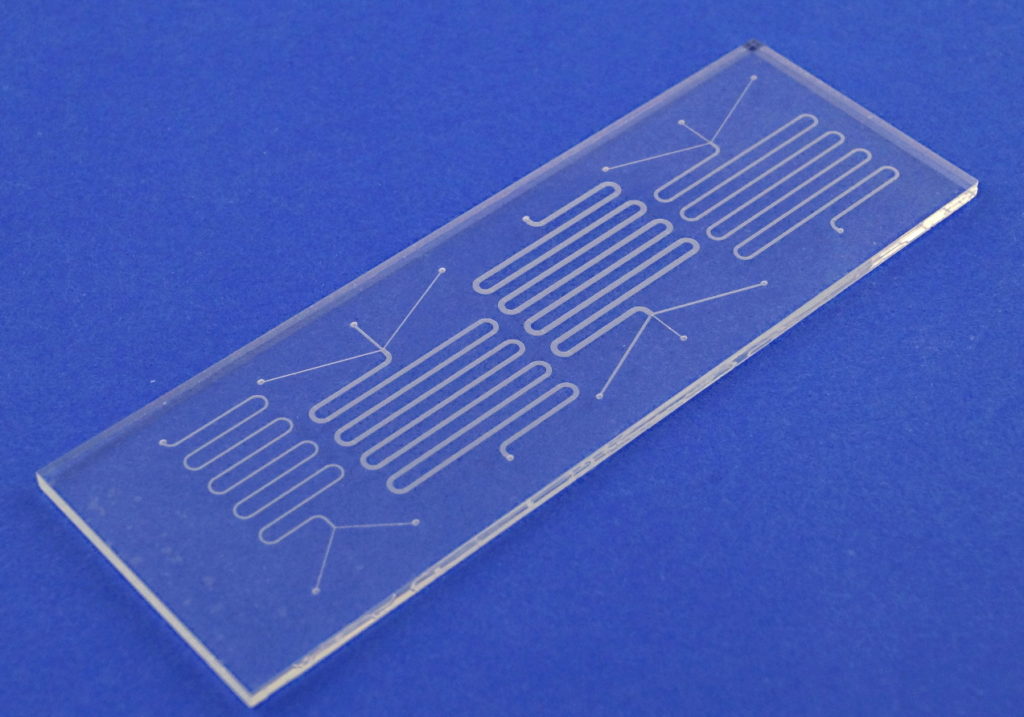|
Getting your Trinity Audio player ready...
|
In order to enrich and separate Circulating Tumor Cells, researchers from Hangzhou Dianzi University presented a 3D-stacked muti-stage inertial microfluidic sort chip (CTCs). In a new work for the journal Cyborg and Bionic Systems, the authors provide a multi-stage integration of spiral and serpentine channels that simultaneously satisfies the needs of high-throughput input and low-throughput output flow detection. Professor Huang from Hangzhou Dianzi University claims that “Circulating tumor cells (CTCs) discovered in peripheral blood, showing a plethora of information are shown to be a sign of cancer diagnosis and treatment monitoring.” However, because to the extremely low quantities of rare cells in peripheral blood (about 1-100CTC/ml) and enormous background cells, accurate extraction of viable and undamaged CTCs is generally difficult to perform.
Over the past few decades, numerous microfluidic systems have been developed to isolate target cells for the purposes of biological research and clinical diagnosis. The current clinical application of large-volume cell sorting technologies has led researchers to conclude that microfluidic-based cell separation technologies offer greater precision in controlling the micro-scale displacement of liquid or cells. Point-of-care testing (POCT) “has significant potential and excellent operation accuracy due to the compact size of the equipment, low cost, and minimal sample consumption,” stated study author Xu. Physical qualities, including size, deformability, mass, electrical properties, etc., can often be used for sorting and detecting biological samples. In contrast to other types of blood cells like RBCs and WBCs, CTCs appear to be significantly larger, allowing for their separation based on size alone. Based on the remarkable impact of size-dependent inertial migration, we present a 3D-stacked multistage inertial microfluidic device.
One label-free method for passively and in high throughput enriching tumor cells is inertial microfluidics. Based on their size, the particles or cells in spiral channels reach a well-defined equilibrium position when the balance between the Dean drag force and inertial lift force is achieved. The recently developed 3D-stacked multi-stage inertial microfluidic cell sorting chip included two square serpentine channels and a trapezoidal spiral channel. The chip’s first stage, the trapezoidal spiral channel, has one inlet and two outlets. There was just one intake for the entire chip without sheath flow, and the channels of the several stages were placed from top to bottom in the direction of the liquid flow. Additionally, matching channels were built to match the flow resistance, ensuring that all stages of channels could function in ideal functioning states. Xu explained that the flow rate was reduced from mL/min at the inlet to L/min at the outlet after automatic multi-stage RBC removal and the deceleration, aggregation, and concentration of target flow. This allowed for simpler integration with downstream detection and analysis methods like impedance detection and imaging analysis.
The tumor cells were used to evaluate the performance of the chip, and the findings showed that it successfully isolated tumor cells (SW480, A549, and Caki-1) from a high number of RBCs with a separation efficiency of >80%, separation purity of 90%, and concentration fold-of-20. The designed 3D-stacked multi-stage microfluidic chip overcomes the limitation between separation purity, separation efficiency, and throughput in a single-stage chip, and provides a promising foundation for integrated downstream detection methods through multi-stage flow rate reduction, according to Huang. “Towards practical application, high flow rate input for high-throughput and low flow rate output for easy downstream detection are usually required simultaneously,” Huang said. The equipment needed for various application scenarios, such as those outside of the laboratory, will be made simpler in the future. To create a portable and automatic sorting detection system, researchers are thinking about how to connect the detection method with the currently used 3D-stacked multi-stage channel.


